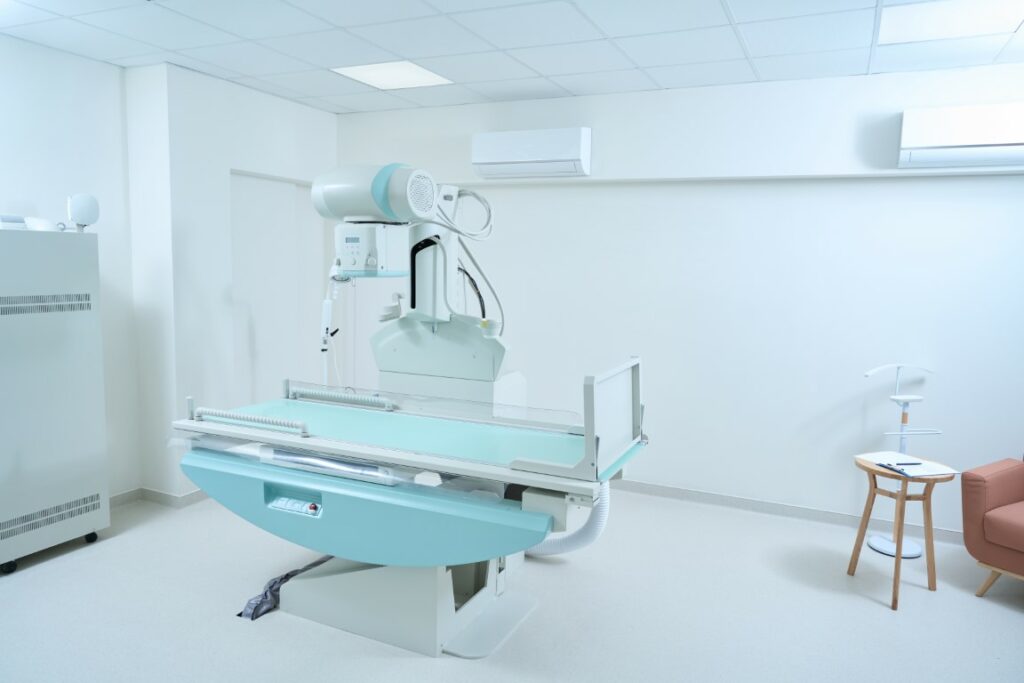Hey there, chiropractors and curious readers! Welcome back to the second part of our blog series on X-ray machines in chiropractic practice. In the first part, we delved into the pros of incorporating these machines into your practice. Today, we’re shifting gears and exploring the other side of the coin – the cons. We know that investing in X-ray machines is a significant decision, and it’s essential to consider all aspects before taking the plunge. So, grab your favorite drink, get comfortable, and join us as we uncover the potential drawbacks and challenges that come with integrating X-ray machines into your chiropractic practice. Let’s dive right in and discover if it’s truly worth the investment.
I. Financial Considerations:

Implementing an X-ray machine in a chiropractic practice involves careful consideration of the financial aspects. Let’s delve into the key factors to help you determine whether investing in an X-ray machine is worth it for your practice.
When it comes to X-ray machines, the first thing to consider is the initial investment costs. The price tag can vary depending on the model and features you require. It includes not only the machine itself but also additional expenses like accessories, installation fees, and staff training. So, it’s essential to factor in all these costs when planning your budget.
But wait, there’s more! Ongoing maintenance expenses also come into play. X-ray machines need regular calibration, servicing, and occasional repairs to ensure they perform optimally and meet safety regulations. These maintenance costs should be part of your financial assessment when considering an X-ray machine for your practice.
Now, let’s talk about your practice’s financial stability. It’s crucial to evaluate your budget and resources to determine if investing in an X-ray machine is a feasible option without compromising the overall financial health of your practice. Take the time to conduct thorough research, get multiple quotes from different suppliers, and consult with equipment experts. This way, you’ll gather valuable insights and make an informed decision based on your unique financial situation.
Remember, the goal is to find a balance between the benefits an X-ray machine can bring to your practice and the financial investment required. So, take a deep dive into your numbers, explore your options, and make a decision that aligns with your practice’s financial goals. Let’s move on to the next section and continue our exploration of X-ray machines in chiropractic practice!
II. Ethical and Safety Concerns:

When it comes to ethical considerations, one key aspect is minimizing unnecessary exposure to radiation. As healthcare professionals, chiropractors must carefully assess the medical necessity of obtaining X-ray images for each patient. It’s all about weighing the potential benefits against the risks. Following guidelines and protocols for X-ray imaging, such as the ALARA principle (As Low As Reasonably Achievable), helps us strike a balance. By doing so, we can minimize radiation exposure while still obtaining the essential diagnostic information we need.
As chiropractors, we have a responsibility to exercise clinical judgment and recommend X-ray imaging only when it’s medically necessary and can significantly impact our patients’ diagnosis, treatment planning, or overall care. This approach reflects our commitment to prioritizing patient well-being and avoiding unnecessary radiation exposure. After all, we want what’s best for our patients.
Now, let’s talk about safety. It’s crucial to ensure that our chiropractic staff receives proper training and adheres to safety protocols when working with X-ray machines. Investing in comprehensive training programs for our team ensures they have the knowledge and skills to operate the X-ray machine safely.
To maintain a safe environment, we establish and strictly follow safety protocols. This includes implementing radiation shielding measures, providing appropriate lead aprons and thyroid collars, and maintaining strict control over the X-ray equipment and its usage. Staying updated with the latest guidelines and best practices in radiation safety is also essential. Regular reviews and audits of our safety protocols help ensure compliance, and periodic quality control checks of the X-ray machine guarantee accurate and reliable imaging while prioritizing patient safety.
By putting ethical considerations and safety protocols at the forefront, our chiropractic practices can provide X-ray imaging services with a strong focus on patient welfare and safety. This approach ensures that the benefits of utilizing X-ray machines outweigh the potential risks, making the investment in this diagnostic tool a justified one.
III. The need for a dedicated space:

While having a dedicated space for your X-ray machine in your chiropractic practice offers numerous benefits, it’s important to be aware of potential drawbacks that may arise.
Creating a dedicated space for an X-ray machine requires additional square footage within your practice. If you have limited space or a small office layout, finding room for the machine and accommodating the necessary safety requirements might pose a challenge. It’s crucial to assess your available space and determine if it can be efficiently utilized for an X-ray facility without compromising other essential areas of your practice.
And designing and constructing a dedicated space for an X-ray machine also involves financial investment. The cost of renovating or constructing a new space, purchasing shielding materials, and ensuring compliance with safety regulations can be substantial. For some chiropractors, the financial burden of creating a dedicated area may outweigh the potential benefits of having an X-ray machine on-site.
As we wrap up our discussion on the cons of incorporating X-ray machines into chiropractic practice, it’s important to remember that every decision has its pros and cons. It’s all about finding the right balance for your practice and patients. Whether you decide to invest in an X-ray machine or explore other options, what matters most is providing the best care possible. Trust your instincts, gather all the information you need, and make a decision that aligns with your practice goals. Remember, you’re making a difference in people’s lives, and that’s what truly counts! And if you haven’t read the first part of this blog yet, click right here.




